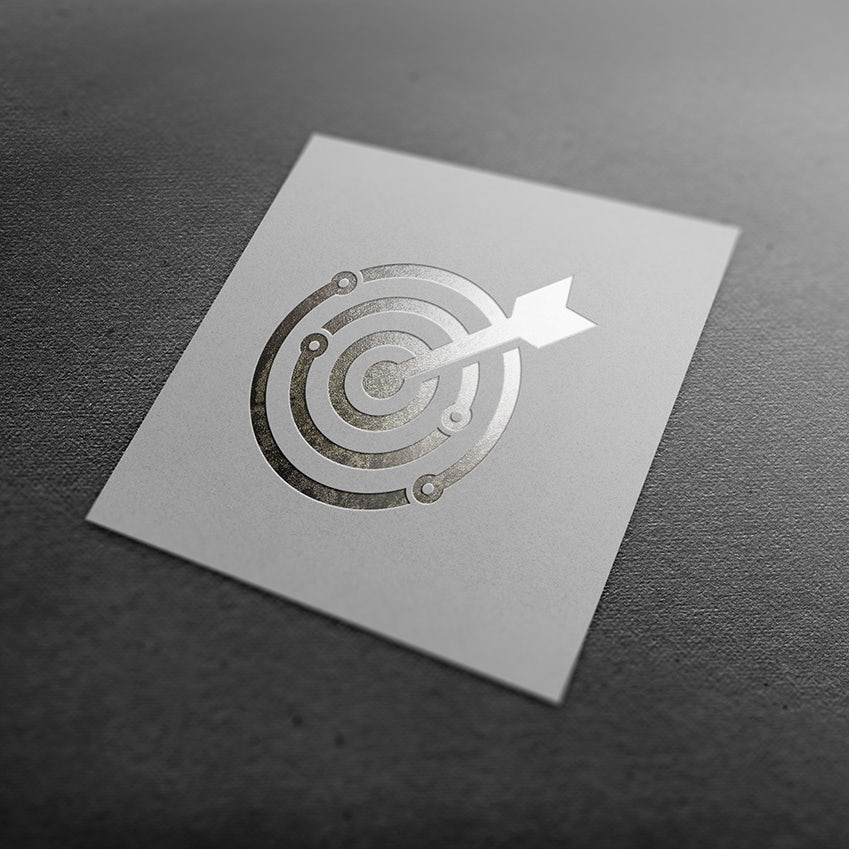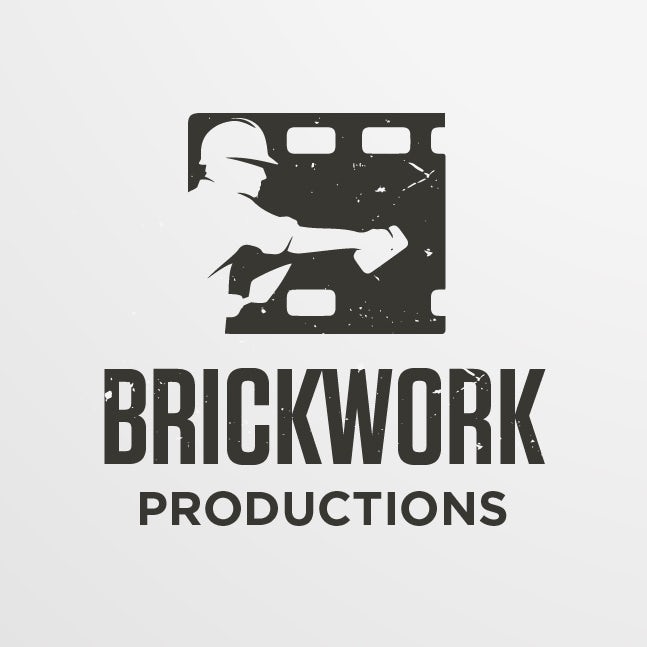As a small business owner, you might think branding is something that’s best left to the Apples, the Googles and the McDonalds of the world. But the truth is, it doesn’t matter how big (or how small!) your company is; if you’re in business, you need to think about branding your business. And according to a survey we at Logotype.ie by Vista conducted, where the majority of small business owners (78%) reported that visual branding has a significant impact on their revenue growth, your bottom line will thank you1.
Larger companies have larger budgets to spend on branding. But you don’t need an Apple-sized bank account to build an effective branding strategy from the ground up. There are plenty of things you can do to help your business stand out, grab your customers’ attention, and make your business memorable without blowing your budget.
Let’s take a look at five branding strategies that will help you take your small business to the next level.
5 branding strategies for small businesses:
—
- Define your brand identity
- Get visual with your branding
- Establish yourself as a subject matter expert with the right content
- Look for partnership opportunities
- Be a superhero for your customers
1. Define your brand identity
—
We've just sent you your first lesson.
Branding is more than just a logo you slap on your website. Your branding is who you are as a company; it’s your values and your mission, it’s the way you treat your customers, it’s the look and feel of your visual assets. So, before you can move forward with the more tactical steps in your branding strategy (like designing your logo), you need to take the time to get really clear on who you are as a company—or, in other words, your brand identity.
There are a few steps to the process:
Figure out who you are
If you already have a clear idea of who you are as a brand, that’s great—but if you don’t, that’s ok, too. It’s just time to do a little corporate soul-searching.
Asking yourself some deeper questions can help you figure out who you are—and who you want to be—as a brand. When you’re defining your brand identity, ask yourself questions like:

- If I had to describe my company in three words, what would they be?
- What do I want to be known for in the marketplace?
- What are my company’s core missions and values?
- What kind of difference do I want to make in my industry?
The more clarity you get on who you are and what you’re about, the more you can infuse that identity into your branding—and the more your brand will stand out and grab customers’ attention as a result.
Figure out who your target customers are

It might sound obvious, but there are tons of small businesses who put so much focus on figuring out who they are and what kinds of products or services they want to deliver that they completely neglect figuring out who they’re trying to sell those products or services to—and their branding suffers as a result.
Take some time to define your ideal customer. Who are they? How old are they? What kind of income and education do they have? Are they predominantly one gender? What are they looking for in the companies they do business with? What matters to them? When would they use your product or service—and why would they need it?
When you know who your target market is, you can use it to guide your branding strategy—and the end result will be a brand that truly connects with the customers you want to work with most.
Establish your POD (or brand “special sauce”)…
No matter what your business does, chances are, there are already other companies doing the same thing. So, if you want your business to stand out, you need to figure out what makes it stand out.

The thing that makes your business different from your competitors is called your point of difference (or POD). Your POD is what makes you special; it’s what makes a customer choose your company to do business with over your competitors—and it should be infused into every part of your branding strategy.
Your POD doesn’t have to be something earth-shattering. Think of it this way: if your company is a Big Mac, your POD is your “special sauce;” it’s what makes your company uniquely you. Do you only use ethically sourced ingredients in your products? Do you have the best customer service in the biz? Has your family business been serving the community for multiple generations? Whatever it is, figure out what makes your business stand out—and build that POD directly into your brand identity.
But also get clear on what’s working in your industry

You want your branding to stand out and be different. But if you want to have the most effective branding strategy, you also need to keep your finger on the pulse of what’s working (and what’s not working) in your industry).
Take stock of your competitors and what they’re doing. Do you notice any trends? For example, let’s say you’re launching a new financial consulting company—and when you check out your competitors, you notice they all have neutral color palettes in their logo design or they all focus their marketing efforts on Facebook instead of Instagram. While you (obviously) don’t want to steal or rip off your competitors’ branding, taking stock of industry trends can give you a sense of what’s connecting with your ideal market (and, just as importantly, what’s not)—and you can build out your brand identity accordingly.
2. Get visual with your branding
—

Once you’ve defined who you are, who your customers are, what makes you special, and what’s working in your industry, it’s time to start actually designing your brand. This step is just as crucial for branding your small business as it is for larger businesses.
Here are a few things you’ll need to create the look and feel of your brand:
- A brand style guide. Before you start designing, it’s important to figure out the details of your design strategy, like your brand color palette, fonts, and design do’s and dont’s. A brand style guide is a great way to organize your design details and make sure you, your designer, and anyone else working on your brand is on the same page with your brand’s direction.
- A logo. Your logo is like the face of your company; it’s the first thing most of your customers will see when they encounter your brand—and it’s the visual asset that will be most closely tied with your business. Your logo should be the first thing you design, as it will act as the jumping off point for all of your other visuals (like your website and your business cards).
- Business cards. If you’re in business, you need a business card—and the design should match your logo and your other design assets.
- A website. Your website is like your company’s piece of digital real estate—and when people visit your website, the look and feel should be consistent with the rest of your branding.
Depending on your business, you might need additional branding assets (like product packaging or corporate letterhead), but the most important thing to keep in mind? No matter where a customer encounters your brand—whether it’s by seeing your logo or visiting your website or checking out one of your products in store—the look, feel, and design should be consistent. If you’re not consistent when branding your business, you risk confusing your customers—and, if they’re confused, you could lose them to the competition.
3. Establish yourself as a subject matter expert with the right content
—
As a small business, you might not have a huge advertising budget. But luckily, you don’t need to spend millions in ad dollars in order to get yourself in front of the right people. There’s a better, easier, and more affordable way to get your name out there—and that’s content marketing.

Content marketing works on so many levels. First, it gives you the opportunity to show off your industry expertise; by establishing yourself as a go-to resource and subject matter expert in your field, your audience will come to trust you—and, when it comes time to them to choose a company to do business with, you’ll be the first place they go.
Content marketing is also a great strategy because it gives you an opportunity to strengthen your branding. By developing a strong brand voice (and then carrying that brand voice throughout your content) you reinforce who you are and what you’re about to your customers—which strengthens the relationship and helps to drive business.
And if you need another reason why content marketing is so effective for small business? It’s affordable—so even if you’re working on a shoestring budget, you can make content work for you.
The key to success with using content as a marketing strategy is to create the right content. Do your research to figure out what kinds of questions your customers are asking—and then create content that answers those questions.
So, for example, let’s say you own a local bakery and, after some research, you realize your customers are searching for recipes and guides to make their own bread. You could create a branded blog post or video that outlines the basics of bread making; the science behind bread, the ingredients you’ll need, and how to get the perfect rise and crust. That kind of content provides serious value for your audience—so, when the time comes that they want to actually go out and buy bread (because, let’s be real—no one wants to make their own bread all the time), you’ll be the first place they visit.
The point is, there is a ton of information about your industry that your customers want and need to know. And if you can add value and answer their questions through your content, you’ll build trust with those customers—and that trust will translate into business.
4. Look for partnership opportunities
—

People like to do business with brands they trust. But if you’re a new brand, establishing that trust can be time consuming. But a great way to speed up the process? Look for partnership opportunities with other brands your customers already work with.
Think of it as trust building by proxy; if your customers are introduced to your brand by a brand they already know and trust, they’re much more likely to extend that trust to you—and give you their business as a result.
The key to success with this strategy? Finding business with similar—but non-competitive—audiences. So, for example, let’s say you’re launching a new energy bar targeted towards endurance athletes. You could look to partner with local races to include your bars in their gift bags, leave samples at local running stores, or offer to write guest posts on popular endurance blogs. All of those companies have the audience you want to target—endurance athletes—but none of them are direct competitors, which will make them much more willing to work with you.
5. Be a superhero for your customers
—
If you want to truly stand out in today’s hyper-competitive market, it’s not enough to talk to the talk—you need to walk the walk, too.
Your branding is about more than your logo, your marketing strategies, or how you grab customers’ attention—it’s about what you do once you’ve connected with those customers. The reputation you gain—and what customers say behind your back—is the most important part of your branding.

Which is why if you want to succeed in the long term, you need to be a superhero for your customers—and make living and breathing customer service your top priority.
Think about it. What better to be known for than providing the highest level of service to your customers? If your customers have a positive experience every time they interact with your brand, they’re going to keep coming back—and they’re going to tell their friends, too.
Now, one thing to keep in mind is that customer service is bigger than any single interaction or department. If you truly want to live and breathe customer service, you need to provide a consistently positive experience for your customers no matter how, when, and why they interact with your brand.
Look for opportunities to improve customer experience within your business. Is it confusing to place an order on your website? Revamp the design to make it more intuitive for your customers. Is it a hassle to make a return? Send customers a prepaid return label and clear instructions to make the process easier and more straightforward. The point is, the better you can make your customer experience, the more you’ll be known as a company that cares about its customers—and the more customers you’ll get as a result.
Kick start your branding strategy
—
You don’t need to spend an arm and a leg to effectively brand your business. All you need is a little creativity and some good, old-fashioned hard word.
And now that you know how to effectively (and inexpensively!) brand your small business, all that’s left to do? Get out there and get branding!
Check out this article for more branding tips.
1. Data collected via online research firm Corus in June 2022 from 1,061 decision makers from small businesses with no more than 100 employees across North America, the UK, Australia and New Zealand.↩
We've just sent you your first lesson.
—
This article was originally written by Kelly Morr and published in 2016. It has been updated with new information and examples.



